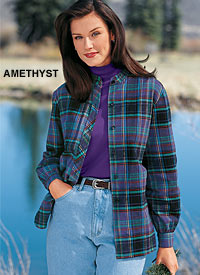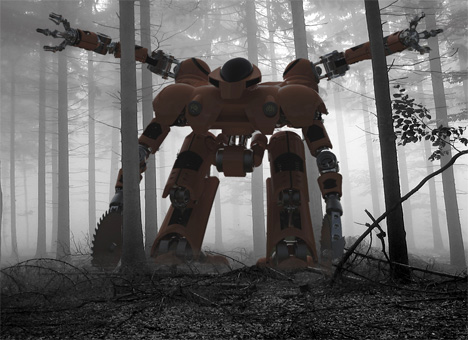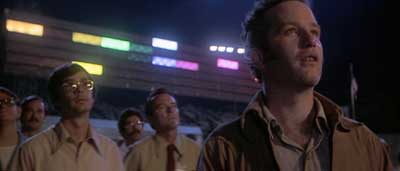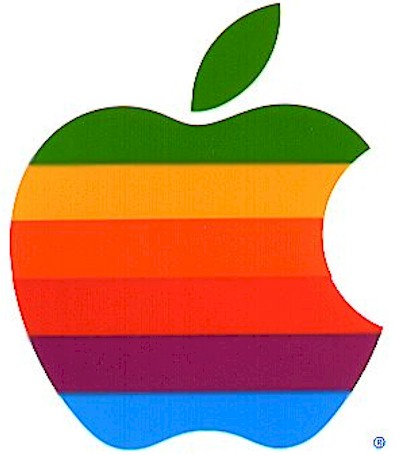Entries from January 2009 ↓
January 8th, 2009 — Music, Photography

In this attitude-drenched shot by photog Noel Vasquez (Getty Images North America), Corey Parks, the defiant, 6-foot-3-inch bassist/vocalist of Die Hunns—formerly of notorious Nashville Pussy (Let Them Eat Pussy, 1998)—lets a low note ring at the Roxy, Los Angeles, May 15, 2008.
January 7th, 2009 — Film, Health, Humor

Looking to lose weight in the New Year? Jennifer Kenny’s Color Me Beautiful outlines her dynamic and innovative approach to exercising off the pounds: She links muscle groups to an entire “color wheel,” getting them to act together as one unit.
For example, B.L.U., or “blue,” stands for Bilateral Latissimuss Upright, indicating the parts of the body to be worked. Kenny’s is a tough routine, but the results, as she demonstrates, can really be something to look at. Highly recommended, whether you’re in shape…or thinking about getting there!
January 6th, 2009 — Film, Humor

How did this woman, above, obtain that plaid flannel shirt? After studying the Movie Reality page, one of the web’s best compilations of film clichés, I think I know: Cheap and frequent loose sex.
How do I know that? I carefully analyzed the image’s details, after reviewing notes from, “At Least 150 Things You Would Never Know if Not for Television and the Big Screen,” below. It’s all the stuff you’ve seen on-screen that never happens to you. Wouldn’t it be great if real life were this neat?
In the movies, or on TV:
• Any person waking from a nightmare will sit bolt upright and pant. Murky or clear, these dreams always have great personal significance.
• After a night of lovemaking, when a man’s new girlfriend finds herself in his unfamiliar home, a flannel shirt will always be available. No matter the boyfriend’s stature, this flannel shirt will be large enough to fit a hefty lumberjack. She’ll wear it as she rummages through his kitchen the next morning, but there won’t be anything to cover her legs.
Continue reading →
January 5th, 2009 — Advertising, Animation, Film

In Dreamworks’ upcoming Monsters vs. Aliens, above, an invasion of Earth by a patronizing race of four-eyed, little gray men, below, moves the U.S. to send out an inoffensive clique of mutants to defend the planet. They include
the brilliant but insect-headed Dr. Cockroach, Ph.D.; the macho half-ape, half-fish The Missing Link; the gelatinous and indestructible B.O.B.; and the 350-foot grub called Insectosaurus.
Along with a 49-foot-11-inch woman named Susan Murphy, aka Ginormica, the group soon challenge the massive Alien Robot, against whom even America’s best missiles vaporize in blooms of meaningless, multicolored plasma.
From my perspective, though, this is all backstory to what’s really going on, namely a small revolution in computer animation, marked by an ever increasing capability in the form.
Continue reading →
January 2nd, 2009 — Race, Science

 I don’t know how much you know about Dr. Neil deGrasse Tyson, above, astrophysicist and Frederick P. Rose Director of the American Museum of Natural History’s Hayden Planetarium, right, here in New York City, or if you know anything about him at all. Even though he’s a big guy, was a 2007 TIME 100 leader, and is on TV more than most scientists, you may not have noticed him, as most Americans don’t pay attention to the people who head knowledge-based organizations.
I don’t know how much you know about Dr. Neil deGrasse Tyson, above, astrophysicist and Frederick P. Rose Director of the American Museum of Natural History’s Hayden Planetarium, right, here in New York City, or if you know anything about him at all. Even though he’s a big guy, was a 2007 TIME 100 leader, and is on TV more than most scientists, you may not have noticed him, as most Americans don’t pay attention to the people who head knowledge-based organizations.
Yet, even if you hadn’t heard of him, you’ve lived on this planet long enough to know that, if someone, at random, asked you who’s the person that has run the nation’s best known public science education institution since 1996, you almost certainly wouldn’t think of a Black guy.
That fact led me to wonder: Is being Neil deGrasse Tyson a little bit like being Barack Obama?
I don’t mean in the sense of being the first African-American in his position, which he is. I mean in the sense of having to deal with white people.
That is, in certain surface ways, Obama and Tyson are somewhat similar. They’re 47 and 50, respectively. Both went to Columbia and Harvard. (Tyson also graduated from the exclusive Bronx High School of Science, and was on staff for three years at Princeton, where Michelle Obama went to college.) Both are physically dominant, good-looking, humorous men, noted for their easygoing manners. Both are married, with young children.
I guess what I’m wondering, though, even though, from a distance, I have some sense of it, is when you’ve got all that going for you, how does race affect your life?
 Like, for example, how much of that overt friendliness—ready humor, a wide smile, and a gentle (or big) laugh—is, though genuinely you, also a key way of putting white people at ease? Also, how much of your day is dedicated to that?
Like, for example, how much of that overt friendliness—ready humor, a wide smile, and a gentle (or big) laugh—is, though genuinely you, also a key way of putting white people at ease? Also, how much of your day is dedicated to that?
In their work, both Obama and Tyson deal with a lot of really smart people. But there have got to have been more than a few occasions, for them both, and especially for Tyson—whose CV has 29 sections, and who deals a lot with the aforementioned ignorant public—where they’ve been the smartest, or one of the smartest guys in the room, yet knew someone was talking down to them, or trying to go around them, because of their racial classification. (We’ve already discussed this happening to Obama.)
Neil deGrasse Tyson is the guest today on my WBAI-NY / 99.5 FM radio show, NONFICTION, this afternoon, Friday, January 2, at 2 pm ET.
In this repeat edition of the broadcast, Dr. Tyson, who’d stopped by WBAI to discuss his book, The Sky Is Not the Limit: Adventures of an Urban Astrophysicist, talks about some of these issues, while also discussing his love for both the universe and its methodical study.
You can hear his ideas by tuning in at 2 pm. If you’re outside of the New York tri-state, check out our stream on the web. If you miss the live show, dig into our archives for up to 90 days after broadcast.
January 1st, 2009 — Design, Film, Science-Fiction

Jordan D. Guelde is designer of the hypothetical Forest Fire Prevention Robot, above, and a man after my own heart. The 24-year-old graduate of the College for Creative Studies in Detroit, MI says he’s “looking for a full-time employment opportunity where I can showcase my passion for design.”
But if you ask me, Jordan, your future is in the movies.
Here’s the scenario:
Continue reading →
January 1st, 2009 — Design



In “The Aesthetics of 1977,” an interesting post from his blog, Dave Troy: Fueled By Randomness, the author discusses how visual designers from that era, particularly ones working around a core set of entertainment products, appeared to imbibe, then spit out, influences.
Maybe it’s just me, but it seems to me that Close Encounters, Atari, Space Invaders, and Star Wars were all linked together with a common visual sense. I think it’s pretty obvious that Atari ripped off Close Encounters for the Space Invaders packaging.
Likewise, the colorful “light organ” used to communicate with the aliens in Close Encounters is a close cousin, visually, to the famous Atari game Breakout. Steve Jobs was one of the designers of the arcade version of Breakout. Note the similarity to the original “rainbow” Apple logo.
He also looks at and compares icons as diverse as Wyoming’s Devil’s Tower, the rendezvous point for the mothership in Close Encounters; the Motorola logo; and Disney’s Space Mountain.
Admittedly, this is the way good designers typically work: Cribbing ideas from other sources, then refining and redefining them until they’re their own. Because of this, cross-pollenization is always hard to prove in visual design, short of an actual admission of it.
But whatever provides seed for an idea, ultimately, nothing may be so enobling as exploring the origins of inspiration, like Troy briefly does here. It would be great if someone were to develop this theme at book-length, in a volume smash-packed with pictures. The visual richness of the 1970s, as a decade, hasn’t even been touched yet.











